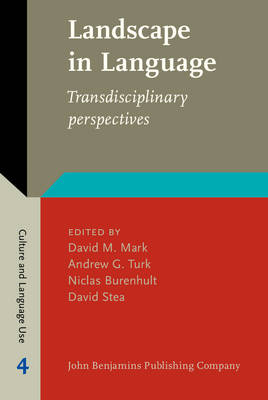
Landscape in Language
John Benjamins Publishing Co (Verlag)
978-90-272-0286-4 (ISBN)
Landscape is fundamental to human experience. Yet until recently, the study of landscape has been fragmented among the disciplines. This volume focuses on how landscape is represented in language and thought, and what this reveals about the relationships of people to place and to land. Scientists of various disciplines such as anthropologists, geographers, information scientists, linguists, and philosophers address several questions, including: Are there cross-cultural and cross-linguistic variations in the delimitation, classification, and naming of geographic features? Can alternative world-views and conceptualizations of landscape be used to produce culturally-appropriate Geographic Information Systems (GIS)? Topics included: ontology of landscape; landscape terms and concepts; toponyms; spiritual aspects of land and landscape terms; research methods; ethical dimensions of the research; and its potential value to indigenous communities involved in this type of research.
1. Foreword; 2. Preface; 3. Landscape in language: An introduction (by Mark, David M.); 4. Ethnophysiography (by Turk, Andrew G.); 5. Exploring philosophy of place: Potential for synergy between phenomenology and ethnophysiography (by Turk, Andrew G.); 6. Embedded in place: 'Mirror knowledge' and 'simultaneous landscapes' among Maori (by Murton, Brian); 7. Philosophical issues in ethnophysiography: Landform terms, disciplinarity, and the question of method (by Janz, Bruce B.); 8. 'Land' and life: Ethnoecology and ethnogeography as complementary approaches to the analyses of landscape perception (by Duvall, Chris); 9. Landscape in Western Pantar, a Papuan outlier of southern Indonesia (by Holton, Gary); 10. Hawaiian storied place names: Re-placing cultural meaning (by Louis, Renee Pualani); 11. Between the trees and the tides: Inuit ways of discriminating space in a coastal and boreal landscape (by Heyes, Scott A.); 12. Differing conceptualizations of the same landscape: The Athabaskan and Eskimo language boundary in Alaska (by Holton, Gary); 13. A case study in Ahtna Athabascan geographic knowledge (by Kari, James); 14. Revitalizing place names through stories and songs (by Paskvan, Susan); 15. Language and landscape among the Tlingit (by Thornton, Thomas F.); 16. Language, landscape and ethnoecology, reflections from northwestern Canada (by Johnson, Leslie Main); 17. Landscape embedded in language: The Navajo of Canyon de Chelly, Arizona, and their named places (by Jett, Stephen C.); 18. Navajo landscape and its contexts (by Topaha, Camelita); 19. Navigating regional landscapes with Jicarilla personal narrative (by Lynch, Elizabeth M.); 20. Ontology of landscape in language (by Kuhn, Werner); 21. The role of geospatial technologies for integrating landscape in language: Geographic Information Systems and the Cree of northern Quebec (by Sieber, Renee); 22. Classifying landscape character (by Brabyn, Lars); 23. Perspectives on the ethical conduct of landscape in language research (by Turk, Andrew G.); 24. Notes on contributors; 25. Index
| Erscheint lt. Verlag | 9.6.2011 |
|---|---|
| Reihe/Serie | Culture and Language Use ; 4 |
| Verlagsort | Amsterdam |
| Sprache | englisch |
| Maße | 164 x 245 mm |
| Gewicht | 990 g |
| Themenwelt | Geisteswissenschaften ► Philosophie ► Sprachphilosophie |
| Geisteswissenschaften ► Sprach- / Literaturwissenschaft ► Sprachwissenschaft | |
| Naturwissenschaften ► Geowissenschaften ► Geografie / Kartografie | |
| ISBN-10 | 90-272-0286-9 / 9027202869 |
| ISBN-13 | 978-90-272-0286-4 / 9789027202864 |
| Zustand | Neuware |
| Haben Sie eine Frage zum Produkt? |
aus dem Bereich


